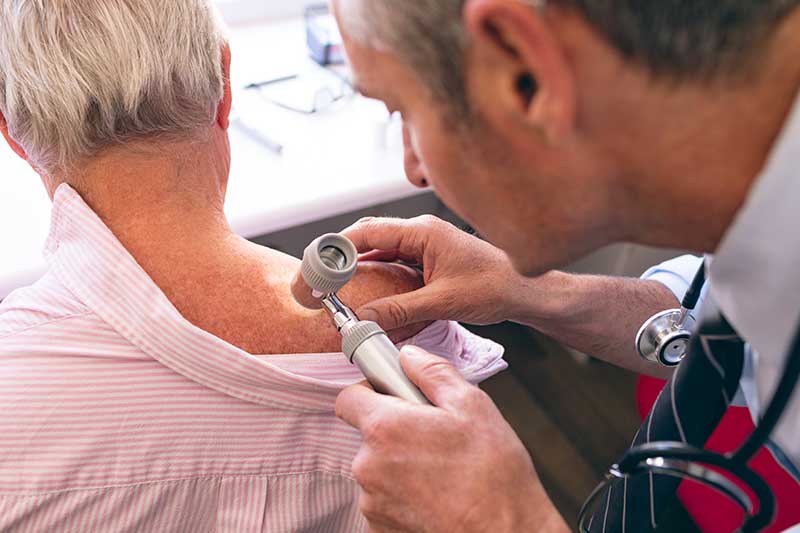Skin cancer is a potentially fatal disease that affects millions of people globally. The good news is that, despite being one of the most common forms of cancer, it is frequently highly treatable when detected early. To safeguard yourself, it is essential to recognize the early symptoms of skin cancer. In this article, we will discuss six vital warning indications that should prompt you to seek medical attention.
1.Abnormal Moles or Alterations to Existing Moles
The vast majority of moles on the epidermis are harmless. Nonetheless, any changes in a mole’s size, shape, color, or texture should be cause for concern. If you observe a mole that looks different from the rest or appears to be evolving, consult a dermatologist. The ABCDE rule can assist in identifying suspect moles:
A: Asymmetry – When one mole half does not match the other.
B: Border – Borders that are irregular or inadequately defined.
C: Color – A mole with multiple or unevenly distributed hues.
D: Diameter – Mole size greater than a pencil eraser (6mm).
E: Evolving – Any size, shape, or color modifications that occur over time.
2.Unusual or new skin growths
Keep an eye out for new skin growths that do not resolve or that persist over time. Cancers of the skin frequently manifest as tiny, raised, translucent bumps or red, scaly patches. Take prompt action if you observe such growths, particularly in areas that are frequently exposed to the sun.
3.Non-Healing Skin Sorrows
Sores or ulcers on the skin that do not resolve can be an indication of skin cancer, specifically squamous cell carcinoma. If you have a lesion that persists for weeks or months without improvement, it is essential to seek medical attention.
4.Chronic Itching or Pain
Sometimes, skin cancer can cause persistent itching or discomfort in a specific area of the skin. Although these symptoms can be caused by a variety of conditions, they should never be disregarded, particularly if they do not respond to standard treatments.
5.Inflammation or Swelling Beyond the Boundaries
Cancers of the skin can produce redness, inflammation, or swelling that extends beyond the affected area’s borders. This may resemble a rash, but standard treatments are ineffective. A dermatologist should examine any skin changes that are unexplained.
6.Alterations to Nail Color or Texture
Also, pay heed to your nails. Cancer of the skin can affect the nail bed, resulting in altered cuticle color, shape, or texture. Examine the nails for dark lines or streaks, pigmentation changes, or fracturing and crumbling.
The conclusion
Skin cancer is a major health concern, but it can often be successfully treated if detected early. Vigilance is the key to protecting yourself. If you observe any of these vital warning signs, consult a dermatologist or healthcare professional immediately. Regular skin self-examinations and yearly check-ups with a dermatologist are also advisable, particularly if you have a family history of skin cancer or spend a lot of time in the sun. By remaining vigilant and acting quickly, you can increase your chances of detecting and treating skin cancer at its most treatable stage, thereby assuring a healthier and safer future for your skin.



